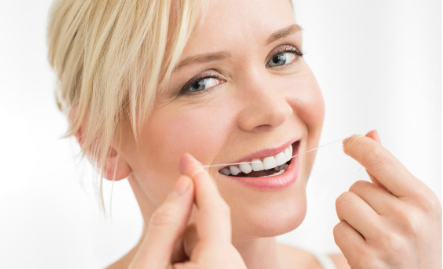Oral probiotics have become one of the most promising trends in dental care. Unlike traditional oral hygiene tools that aim to eliminate bacteria, probiotics work with your body by introducing beneficial bacteria to create a healthier, more balanced oral microbiome.
When taken consistently, oral probiotics can help reduce gum inflammation, fight bad breath, minimize plaque buildup, and even support enamel strength. But here’s the catch: just like any health supplement, the benefits you get depend heavily on how you use them.
Many people start taking oral probiotics with high hopes, only to be disappointed when they don’t see results. The problem isn’t usually with the probiotics themselves—it’s with how they’re being used.
To help you get the most out of your investment in oral health, let’s break down the most common mistakes people make when taking oral probiotics for teeth and gums—and how to avoid them.
Mistake #1: Choosing the Wrong Strains
Not all probiotics are created equal. The strains that support gut health are not necessarily the ones that benefit your mouth.
Why It Matters:
The bacteria that colonize your tongue, teeth, gums, and cheeks are different from those in your digestive tract. That means you need oral-specific strains to get real results.
What to Do Instead:
Look for products that include strains like:
- Streptococcus salivarius K12 or M18: Known for promoting gum health and reducing harmful oral bacteria
- Lactobacillus reuteri: Shown to reduce gingivitis and inflammation
- Lactobacillus paracasei and L. salivarius: Support enamel protection and help manage plaque
Choosing the right strains is the foundation of any effective oral probiotic routine.
Note: If you’re unsure which probiotic is best for your teeth and gums, this in-depth ProDentim review breaks down how this oral probiotic supplement supports healthier gums, fresher breath, and overall dental balance. It’s a helpful resource if you’re looking to avoid common mistakes and choose the right product for your routine.
Mistake #2: Swallowing Capsules Instead of Using Lozenges or Chewables
It might seem easier to pop a capsule and go, but that convenience can come at the cost of effectiveness.
Why It Matters:
The bacteria need to colonize in your mouth to be effective. If you swallow a capsule designed for gut health, the probiotics may not reach your mouth at all.
What to Do Instead:
Use slow-dissolving tablets, chewables, or lozenges designed specifically for oral health. These forms allow the beneficial bacteria to linger in your mouth, attach to oral surfaces, and start doing their job.
Mistake #3: Using Antibacterial Mouthwash Immediately Before or After
You might think you’re doubling down on oral care by rinsing with mouthwash and taking probiotics right after. In reality, you’re doing more harm than good.
Why It Matters:
Antibacterial mouthwash kills all bacteria, including the beneficial strains introduced by your probiotic. This wipes out the progress you’re trying to make.
What to Do Instead:
- Use mouthwash at a different time of day than your probiotic (e.g., rinse in the morning, take probiotics at night).
- Or, skip traditional mouthwash altogether and opt for a gentle rinse with xylitol, sea salt, or aloe vera that won’t disrupt your microbiome.
Mistake #4: Not Taking Them Consistently
Like most supplements, oral probiotics don’t deliver overnight miracles. They require consistent, daily use to establish and maintain healthy bacteria colonies in your mouth.
Why It Matters:
Inconsistent use can lead to fluctuating results or no results at all. The oral microbiome needs time to adapt and balance itself.
What to Do Instead:
- Take your oral probiotic at the same time every day.
- Pair it with an existing habit (e.g., brushing teeth at night) to help build consistency.
- Stick with your routine for at least 3-4 weeks before expecting significant changes.
Mistake #5: Ignoring the Rest of Your Oral Hygiene Routine
Some people start taking oral probiotics and assume they can scale back on brushing or flossing. This is a big mistake.
Why It Matters:
Probiotics are a supportive tool, not a substitute for brushing, flossing, or seeing your dentist. Harmful bacteria still accumulate through food and drink and must be physically removed.
What to Do Instead:
- Continue brushing twice daily with a gentle, non-abrasive toothpaste (avoid SLS).
- Floss once a day to clean between teeth and below the gum line.
- Keep up with your dental checkups and cleanings.
Probiotics work best when layered into a complete oral hygiene plan.
Mistake #6: Eating or Drinking Immediately After Taking Your Probiotic
Letting a probiotic lozenge dissolve in your mouth and then immediately washing it down with coffee or soda? That’s undermining the whole process.
Why It Matters:
Food and drink (especially acidic or hot items) can wash away the probiotics before they get a chance to adhere to your oral tissues.
What to Do Instead:
- Wait at least 30 minutes after taking your probiotic before eating or drinking.
- Take it as the last step in your evening routine, just before bed, to let it sit undisturbed while you sleep.
Mistake #7: Using Low-Quality Products Without Clinical Backing
Just because a supplement is labeled “oral probiotic” doesn’t mean it contains effective doses or high-quality strains.
Why It Matters:
Low-grade supplements may contain dead bacteria, insufficient colony-forming units (CFUs), or filler ingredients that compromise effectiveness.
What to Do Instead:
- Choose supplements with clinical studies or published reviews.
- Look for transparent labeling with strain names and CFU counts (ideally 1-3 billion CFUs per dose).
- Avoid products with artificial colors, preservatives, or sugar alcohols that can irritate your gums.
If you want to see an example of a thoroughly reviewed and trusted oral probiotic, this article breaks down one of the top products of the year with full ingredient analysis and real-world results: https://www.globenewswire.com/news-release/2025/04/24/3067116/0/en/ProDentim-Reviews-Ingredients-Complaints-Side-Effects-2025-Honest-User-Feedback-on-Dental-Benefits-and-Real-Results.html
Mistake #8: Giving Up Too Soon
Everyone wants fast results, but changing your oral microbiome takes time. Some users stop after a week, thinking the supplement “didn’t work.”
Why It Matters:
Even with the best routine, you need several weeks of consistent use to experience noticeable improvements in gum sensitivity, breath freshness, or plaque reduction.
What to Do Instead:
- Be patient and track your progress.
- Take photos of your gums or journal your symptoms to notice subtle improvements over time.
- Stay committed for at least one full month before evaluating results.
Final Thoughts: Make the Most of Your Oral Probiotic Routine
Oral probiotics have the potential to transform your dental health from the inside out. But like any supplement, their success depends on how you use them.
By avoiding these common mistakes and being mindful of consistency, quality, and complementary oral care habits, you can:
- Reduce gum inflammation and bleeding
- Improve your breath naturally
- Lower your risk of plaque buildup and tooth decay
- Support a stronger, more balanced oral microbiome
In 2025 and beyond, the future of dental health is about working with your body, not against it. Probiotics are a powerful tool — if you give them the chance to work.
Choose the right strains. Use the right delivery method. Be consistent. And watch your oral health flourish.































